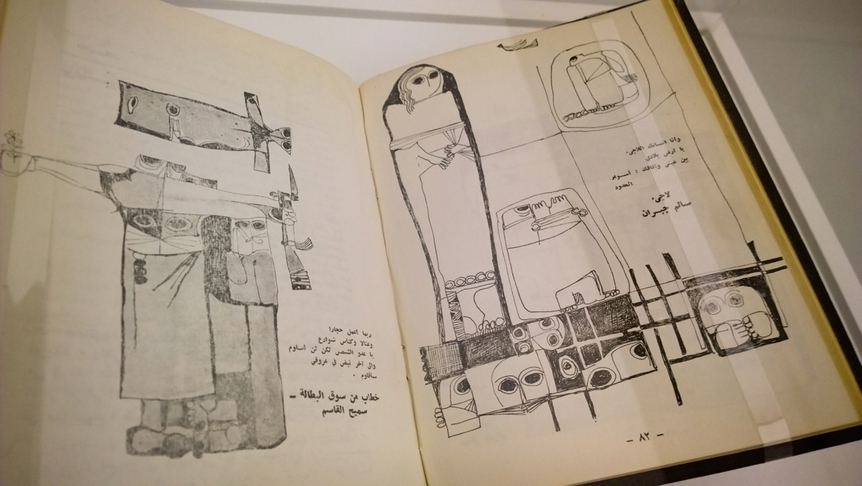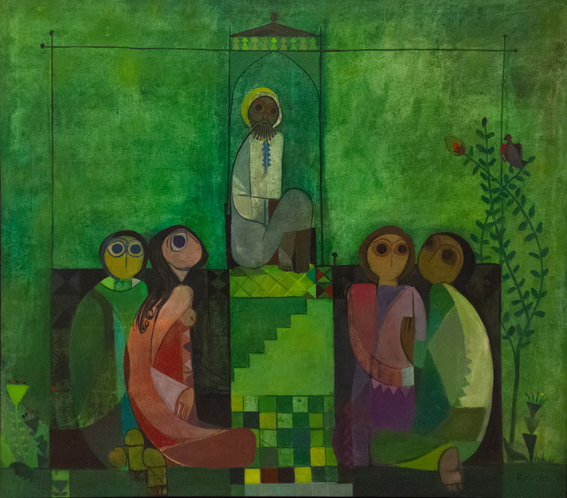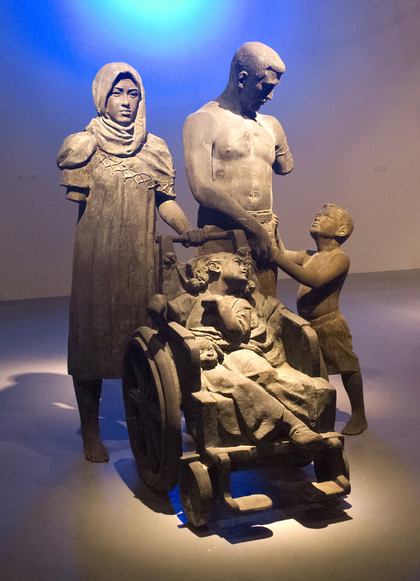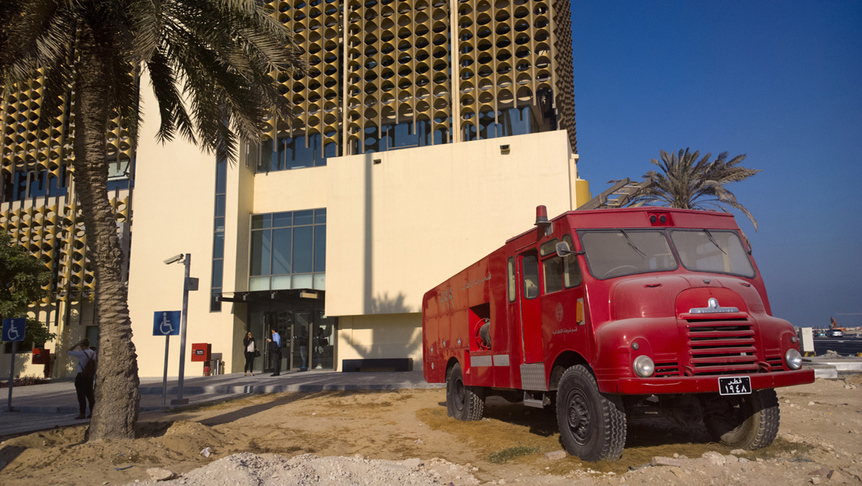
R
E
V N
E
X
T
In mid-October, two prominent Iraqi artists were featured in Doha—London-based Dia al-Azzawi and Canadian-Iraqi Mahmoud Obaidi. The Qatar Museums Authority has organized a retrospective exhibition for al-Azzawi, curated by Catherine David, deputy director of the National Museum of Modern Art at the Centre Pompidou. Featuring over 400 art objects created between 1963 and 2016, the retrospective is titled “I am the cry, who will give a voice to me? Dia al-Azzawi: A Retrospective (From 1963 Until Tomorrow),” and is shown in two locations. The first part of the exhibition, held in Qatar Museums Gallery Al Riwaq, profiles al-Azzawi’s practice that bridges art and politics, and charts some of the sources of his inspiration—the Six-Day War in 1967, the collapse of the Palestinian liberation movement in the 1970s, the Gulf War in 1991, the American invasion of Iraq in 2003, and even his own military service on the Kurdistan war front in the mountains of northern Iraq in the early 1970s.
The other half of the exhibition explores a gentler side of al-Azzawi’s art practice: his encounters with the written word. The artworks shown in Mathaf: Arab Museum of Modern Art plot al-Azzawi’s interpretations of the shared mythologies that bind together Arab nations and cultures, as well as his engagements with contemporary poets who, like the artist, seek to address the anxieties of the contemporary Arab world.
Coinciding with al-Azzawi’s retrospective exhibition is Mahmoud Obaidi’s “Fragments,” hosted in Qatar Museums Gallery Katara. While part of al-Azzawi’s retrospective depicts senseless destruction and its consequences, there is also a sense of hope and community, and a dialogue with the Arab World at large. Obaidi’s show, however, seethes with anger and acrimony.
With the backing of Sheikha al-Mayassa bint Hamad bin Khalifa al-Thani, the Qatar Museums Authority develops art-related programs for the country, including those in the Fire Station art space and a plethora of public art projects.
To read more articles on Qatar, go to our digital library: https://library.artasiapacific.com/
Brady Ng is Hong Kong desk editor at ArtAsiaPacific.







